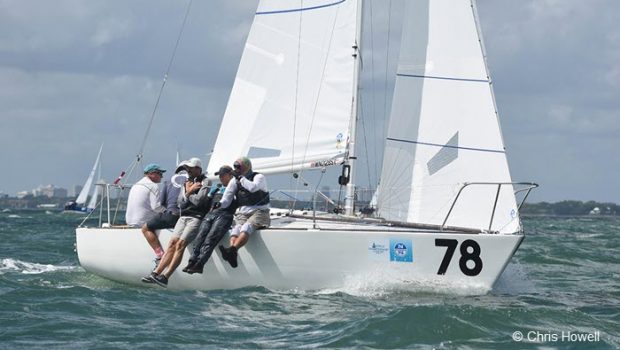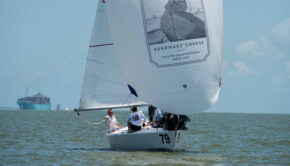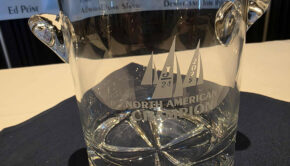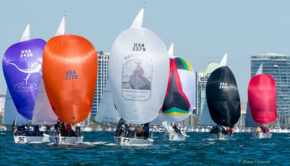Difference makers for World Champions
Published on November 12th, 2019
The history of the J Boats business began with the J/24 during the summer of 1975 in Stonington, Connecticut. Designed and built by Rodney Johnstone in his garage, the one design keelboat remains a dominant international class, proven again with 79 boats from 20 countries at the 2019 World Championship.
While not the sexiest boat by today’s standards, it has what every great class strives for – a committed community of passionate sailors. Keith Whittemore is one of those people. Based in the Pacific Northwest, he’s been in the class forever, and is now a World Champion after claiming the 2019 title.
Here’s an excerpt of a report filed by North Sails’ Mike Ingham in which he spoke with Whittemore on what it took for Team Furio to win, with many of the tips applicable regardless of boat type or racing preference.
Keith called out three key factors: team (the right balance of skill and attitude); preparation (a well prepared boat, and a solid training plan); and speed (he is a fanatic about sails, rig tune, and trim).
Winning Team
Keith spoke highly of his team’s skills and attitude, beginning with tactician Brian Thomas. “Brian and I have been sailing together for 40 years. We get along great, and I totally trust him.” Trimmer Willem van Waay is a newer addition to the team, and Keith says he brought some big regatta winning experience and a great attitude. Shelby Milne is on mast. “She has been with the team for two years and is great at her job, reliable, hardworking, and a ton of fun.” Mark Rodgers mans the bow; “He is damn fun to be with, 100% reliable up there, and salt of the earth.”
Winning Speed
• Live Through the Puffs: “In the bigger puffs, or if the wind increases during the race, you need to get good at depowering the boat. The idea of setting up the rig for the lulls is to excel in the lulls (big gains), But that means you have to learn to hang in there for the puffs with a soft rig. Play backstay, cunningham, boom vang, genoa halyard, and pinch as much as you can (less in waves). Last resort is to ease the genny sheet. No matter what, keep the boat mostly flat and the helm balanced.”
• Jib Luff Tension: “To help make the genny work from 1 to 20 knots through flat water and waves, be super aggressive with the halyard and jib cunningham. If it is light, sail with scallops between the hanks. But if you make the halyard too loose, the scallops bunch in the middle -that is not good. As the wind increases, the halyard gets tighter and tighter and eventually at the top end it is stretched. The halyard has to be right for the trends, then fine-tune with the jib cunningham.”
• Jib Leads: “In flat water, we set the leads to touch-touch“ (when over-trimmed, the genoa touches the chain plate and the spreader simultaneously). “In the chop we moved it forward a hole to round out the bottom and power it up. That may not seem like a lot, but since the lead is so close to the clew, it makes a big difference. When the waves were on the side on one tack and on the bow for the other, we would only power up on one tack.”
Life beyond the title
Team Furio have been sailing the J/24 for a long time, and they plan to keep it up. They have a 25-boat local fleet in Seattle, and they’ve made friends all over the world. “That is something really special about the class,” Keith points out. “There’s a sense of community and friendship. Of course we want to do well, but really we do this because we sail with people we like to spend time with.”









 We’ll keep your information safe.
We’ll keep your information safe.